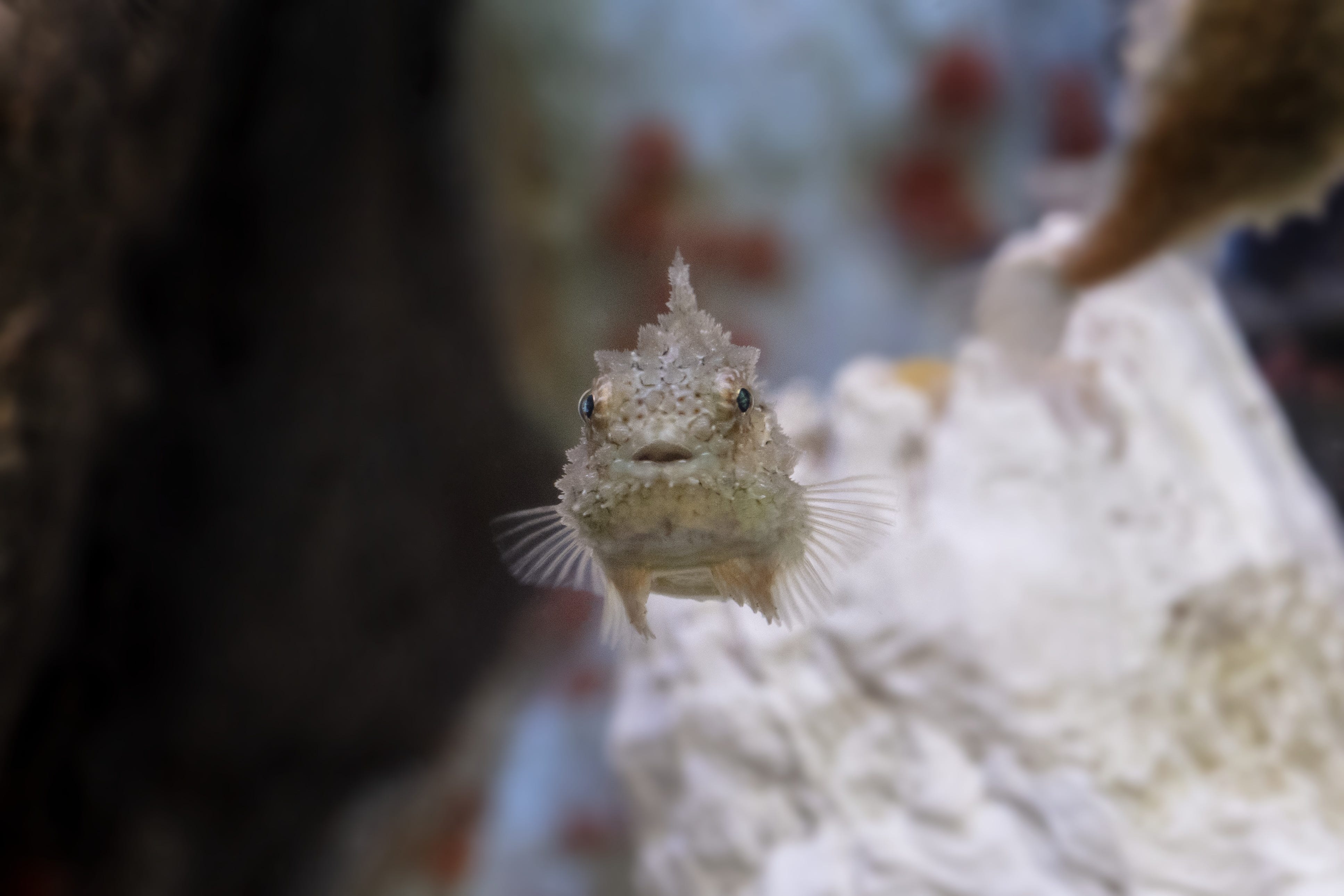The world feels angry and chaotic. So let's all take a minute to stare at this weird fish.
I tell you this fish story at this particular moment in time because our brains are filled with horrors and our souls are burdened by news of war, virus sub-variants and political rancor.

This is a story about a fish. A very weird fish. A fish that, if I’m being honest, seems like an evolutionary prank, a creature whose very existence draws into question the concept of logic.
I tell you this fish story at this particular moment in time because our brains are filled with horrors and our souls are burdened by news of war, wildly contagious virus subvariants and political rancor. As if by cosmic necessity, the Shedd Aquarium in Chicago recently added a small tank housing 26 of these fish, and that provides an opportunity, if you’ll join me, to focus our bad-news-addled brains for a moment and stare blankly at this oddest of aquatic critters, ultimately uttering the question: “What in the actual heck is going on here?”
The fish is called a lumpsucker, the most appropriate name ever assigned to a living creature. It resembles a round lump, about 2 to 3 inches wide, and I pray I have not offended any lumps with that description. It has a suction cup on what may or may not be its belly, allowing it to attach to rocks and other surfaces.
This fish is bad at being a fish
You might ask why a fish needs to attach to rocks or other surfaces, and the answer is simple: This fish is quite bad at being a fish. It doesn’t swim well – at all. Its fins, the ones that didn’t evolve into a suction cup, are tiny while its body is bulbous. If you could stab a straw into a chicken nugget and inflate it, it would vaguely resemble a lumpsucker.
Opinion in your inbox: Get our newsletter, and exclusive access to our columnists, in our daily roundup
As if that wasn’t enough to make you exclaim “WHAT HATH GOD WROUGHT?”, the lumpsucker’s blob-esque body is covered in what are effectively teeth. A paper published last year in the Journal of Morphology – I read it mainly for the protozoological erotica – described the lumpsucker as “a rotund fish covered with epidermal, cone-shaped, enamel odontodes.”
Odontodes are dermal teeth. What I’m saying is this fish has teeth on the outside, where one normally does not expect to find teeth.
To recap: looks like a lump; can’t swim worth a hoot; evolved a random tummy suction cup; is covered in external teeth.
More from Rex Huppke:
We owe the 1 million COVID dead an answer: Did we really do all we could to help?
GOP compassion: Give formula to American babies, not hungry immigrant ones
Trickle-down creeponomics: Gaetz calls women protesters ‘over-educated’
Because I’m an investigative journalist, I traveled to the Shedd Aquarium along the shore of Lake Michigan to put eyes directly on this ocean-born abomination. There I met senior aquarist Jonathan Dinman, who took me behind the scenes so I could stare into the face of fish freakiness.
A delightful aquatic surprise
Standing next to a waist-high, cold, bubbling aquarium, I looked down and saw the beasts I had read about and OH MY GOD THEY WERE SO CUTE I THOUGHT I WAS GOING TO DIE!!
“They just look so endearing,” Dinman said, correctly. “C’mon, that face. And maybe because they’re a little derpy, you watch them try to swim and you’re like, ‘Ohhh, you’re trying so hard!’ ”
The lumpsuckers are definitely derpy. But their faces carry a look of grim determination and, if I didn’t know better, a slight smile that says, “Hey, maybe things aren’t quite as awful as you thought.”
I was transfixed, sucked in by the lumpsuckers.
The look in her eyes: I rescued a woman and girl from a burning home and relived my own childhood trauma
Their aquarium, visible to visitors through a round window you have to bend over to look through, is in the same area as beluga whales, dolphins and sea otters. Those are three big crowd-pleasers, making the lumpsucker a tough sell, the proverbial little fish in a big pond.
But Dinman is confident that stardom awaits.
“They’re very charismatic,” he said. “Eventually everyone will know about them.”
I certainly hope so. There’s something magical about these monstrosities.
Dinman explained that their pelvic fins evolved into a suction disc that lets them cling to objects in the rough waters of the north Pacific.
I asked what the lumpfish eat.
“Worms, mollusks or crustaceans that don’t move fast, if at all,” Dinman said with a look that acknowledged the lumpfish’s awkward lack of speed and stealth. “I honestly don’t know how they survive. I think they have so many young in the ocean that they just wind up making it.”
Can the lumpsucker save us all?
And that’s when it hit me. These fish are adorably weird. They have expressive eyes that help us see past the fact that they look like a ping-pong ball dressed as a post-apocalyptic fish. But beyond that, these fish, seemingly against all odds, are survivors.
And right now, in a time when so much around us seems dreadful, staring into the eyes of a nugget-sized fish that looks like it’s saying “Bub, let me tell ya, I’ve been through some stuff and came out the other side just fine” is exactly what we all need.
Long live the lumpsucker. Long live us all.
Follow Paste BN columnist Rex Huppke on Twitter @RexHuppke and Facebook: facebook.com/RexIsAJerk